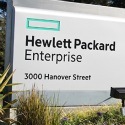
HPE is partnering with Intel and the Linux Foundation as it continues its push to sell 5G core and edge network infrastructure. HPE and Intel plan to build an open source project under the Linux Foundation to help operators automate network management as they roll out next-generation networks across sites that use hardware from multiple vendors. HPE calls its new partnership the Open Distributed Infrastructure Management Initiative.
In addition to Intel, HPE is partnering with several other companies for this initiative, including IBM's open source software unit Red Hat and IT services giant Tech Mahindra, as well as AMI (an input/output system firmware vendor), Apstra (a data center network automation specialist) and World Wide Technology (a provider of automation and orchestration solutions for carriers and enterprises).
Enterprise networks, HPE's core business, are also a target market for the company's 5G solution set. HPE says enterprise customers can use its resource aggregator to simplify infrastructure automation across different vendors and locations. The company says this product will launch during the second quarter of this year along with "associated infrastructure-specific plug-in components."
Many of the partners helping HPE with its open source initiative are also working with Ericsson and Nokia, HPE's competitors in the telecom space. Intel is working with both of these companies in selling 5G basestation chips.
HPE says its goal is to contribute "infrastructure-as-code" to the open source community. The company sees an opportunity to use open source to supplant traditional network hardware vendors, as operators transition to 5G and virtualize core network functions that were previously handled in hardware. But the companies that currently control operator core networks are not standing still. Ericsson is also working on open source initiatives and Huawei is developing a cloud native 5G core.
Mobile core networks are not new territory for HPE; it already sells home location register and home subscriber server solutions to network operators. Earlier this month, the company said it will be launching a complete 5G core stack, leveraging functionality from partners Affirmed Networks, Mavenir, Metaswitch, Casa Systems and Samsung.
Interestingly, one of HPE's 5G core partners, Affirmed Networks, said last week that it will be purchased by Microsoft for an undisclosed amount, an announcement that could impact its partnership with HPE. HPE and Microsoft may or may not be competitors when it comes to building a 5G core network. HPE has made it crystal clear that it wants to be in this business, while Microsoft is more opaque. Following the Affirmed announcement, the software giant did tell Light Reading that it wants to "evolve our work with the telecommunications industry," but the company also said it is in discussions with network equipment operators about working together, indicating that it is not currently trying to compete head-on with the likes of Ericsson, Nokia and Huawei. HPE, on the other hand, is trying to dive head first into the space currently controlled by these companies.
In addition to its 5G core stack and open source project, HPE is working on a multi-access edge computing offering that includes compute, control and storage nodes for the edge of the network. The company does not have a RAN offering, but it does plan to integrate its cellular core with some of its Aruba enterprise Wi-Fi 6 networks.
HPE plans to sell its 5G core stack and its open source resource aggregator for enterprise customers through HPE Greenlake, which allows customers to purchase software as a service and to pay only for the functions they need.
— Martha DeGrasse, special to Light Reading. Follow her@mardegrasse
About the Author(s)
You May Also Like




_International_Software_Products.jpeg?width=300&auto=webp&quality=80&disable=upscale)







